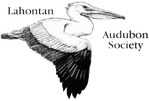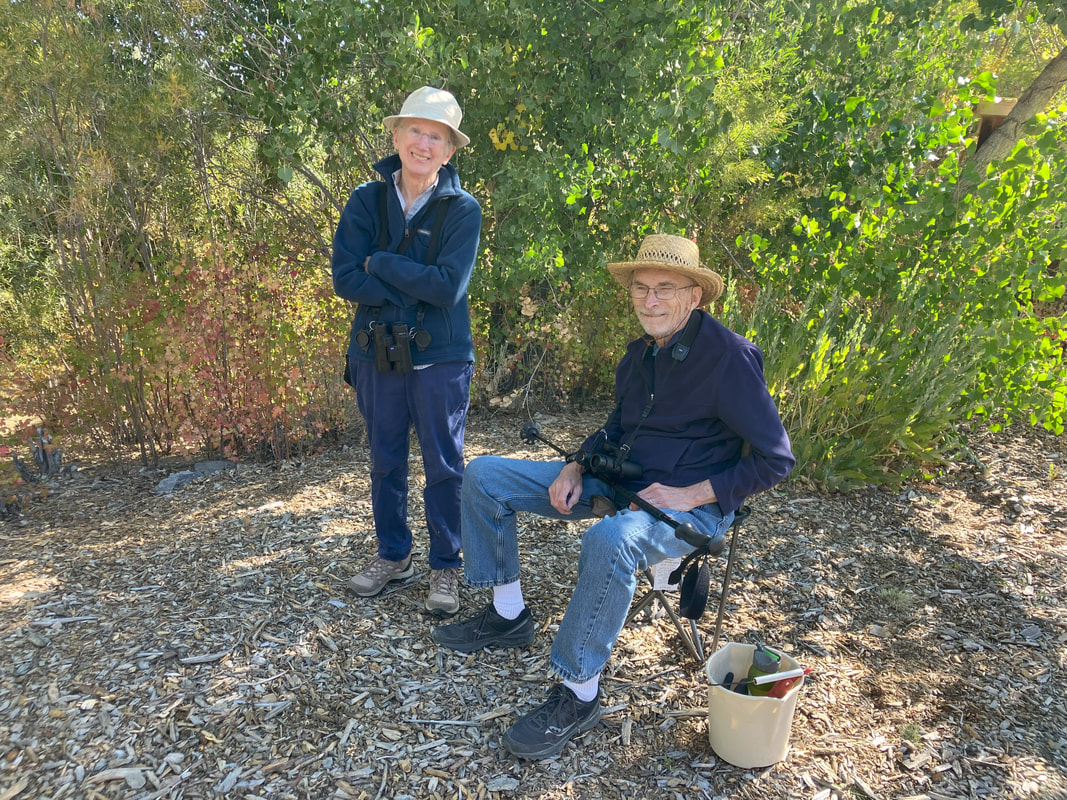The Pelican-- Hummingbird and Pollinator Garden Planting at Valley Wood Waterwise Gardens10/19/2023 By Diane Wong-Kone and Tom Stille On Saturday, October 7, 2023, Lahontan Audubon Society (LAS) volunteers, alongside volunteers from River School Farm, Help Save the Bees, Biggest Little Bee City, and Keep Truckee Meadows Beautiful helped beautify our neighborhood at the Valley Wood Waterwise Gardens in northwest Reno. These demonstration gardens, located just off of Valley Wood Drive, were designed by LAS’ Vice President Tom Stille. Each of these demonstration gardens displays plants that are adapted to grow in our area. Volunteers this day were treated to learning from people like Tom and master gardener Barbara Fenne who know how to make the plants flourish. Certainly, the birds in the gardens enjoy this place. White-crowned Sparrows, Lesser Goldfinches, Spotted Towhees, California Quail, California Scrub-jays, Yellow-rumped Warblers, and even a Red-breasted Nuthatch flitted and chattered throughout the gardens as the volunteers worked. Volunteers planting in the pollinator gardens. LAS volunteers Kathie and Steve Jenkins dropped by to help and learn about some of the waterwise gardening techniques. That day, the goal was to repair damage to some of the irrigation lines, create a hummingbird garden in a raised bed, and enhance plantings in the pollinator garden. Volunteers helped with all these tasks. Earlier this year, thirsty coyotes damaged the irrigation lines to find water and left them in disrepair. Understanding why the lines were damaged, volunteers not only fixed the lines and buried them, but also added guzzlers near the lines. The guzzlers, shaped like shallow pans, catch water from the drip lines, providing a water source for wildlife and eliminating the line chewing problem. One of the guzzlers was too deep, and under Tom’s instructions, volunteers mixed cement and shaped a guzzler to the proper depth. Shallow guzzlers still catch water but are easier to clean if debris gets trapped in the water. Also, shallow water is safer as smaller animals like mice and birds can drown if the water is too deep. Installing a guzzler for wildlife and planting seeds of Palmer’s penstemon. At the pollinator gardens, volunteers planted seeds and young shoots of flowering plants that provide important food sources for bees, butterflies, and other pollinating insects. Some of the plants installed included Palmer’s Penstemon, Narrow-leaved Milkweed, and Coreopsis. These plants provide food for a variety of native bees and the milkweed is a host plant for the monarch butterfly, a candidate for listing as an endangered species. All of these plants provide beautiful flowers to enjoy and do not require a lot of water to grow, an adaptation that is important to consider for our own yards as prolonged drought cycles are part of our climate pattern. Volunteers building a raised bed and installing a drip line for a hummingbird garden. A little farther along the path, volunteers were also busy building a raised bed for a hummingbird garden. They did this by making a box frame out of cut branches and mixing soil with worm compost from the River School Farm. Multiple nectaring plants such as California Fuchsia, aka Hummingbird Trumpet, Red Yucca, and more Coreopsis were planted. Volunteers then installed a Nitafilm drip line for irrigation and mulch made from local wood chips. The mulch will help maintain soil moisture, reducing the need for more watering. Thanks goes to all the volunteers who have helped with creating our beautiful Valley Wood Gardens! Ongoing help is still needed and much appreciated. Please stay posted for volunteer day announcements with LAS or you may email Barbara Fenne, [email protected], if you are interested in helping out on a more regular basis. Some new, beautiful flowers will bloom in the gardens next year! A volunteer with Help Save the Bees plants in the pollinator garden while Tom Stille chats with volunteers at the hummingbird garden bed.
Plants mentioned: Asclepias fascicularis – Narrow-leaved milkweed Coreopsis spp. – Tickseed Epilobium canum – California fuschia Hesperaloe parviflora - Red yucca Penstemon palmeri – Palmer’s penstemon |
topics
All
Archives
July 2024
|










 RSS Feed
RSS Feed